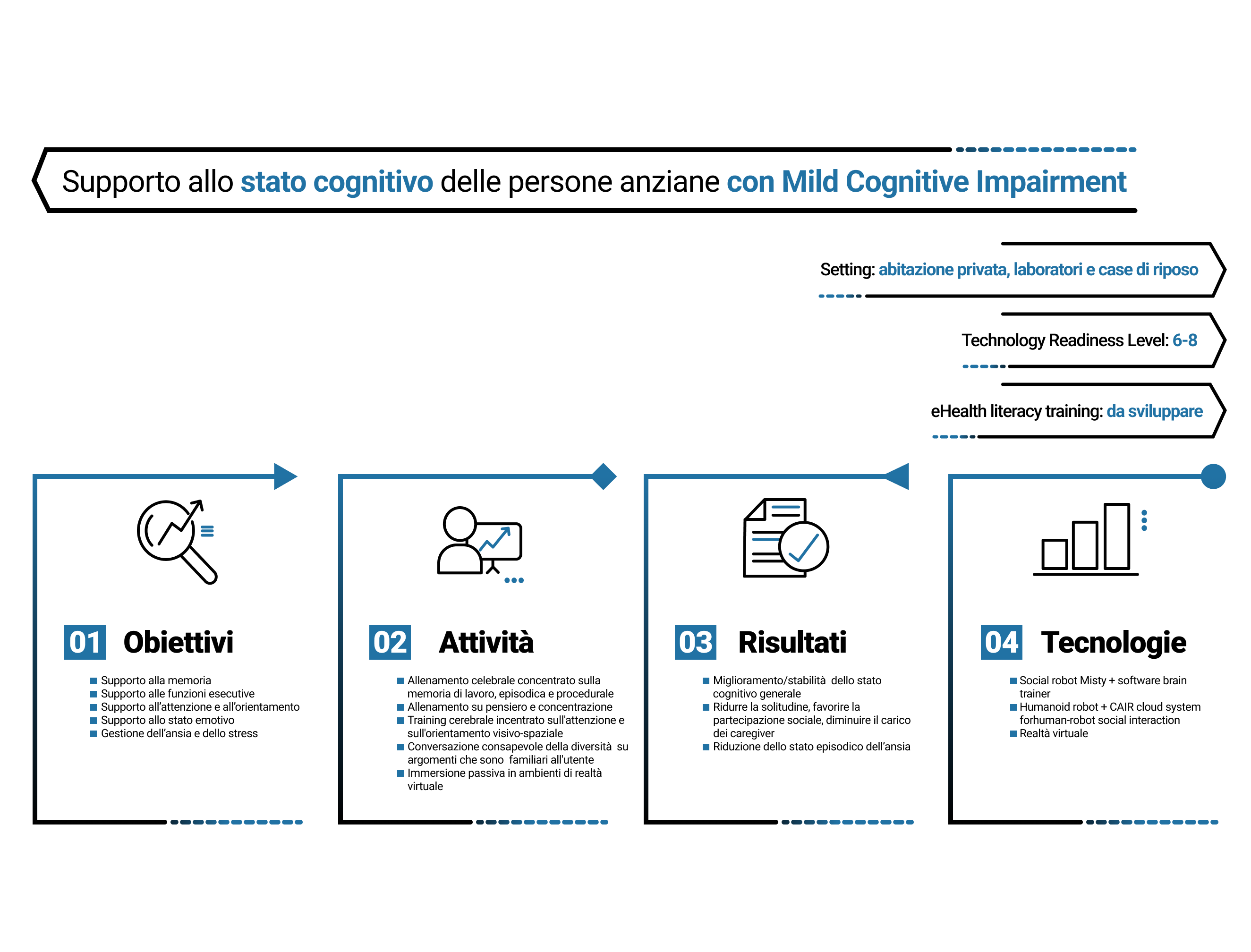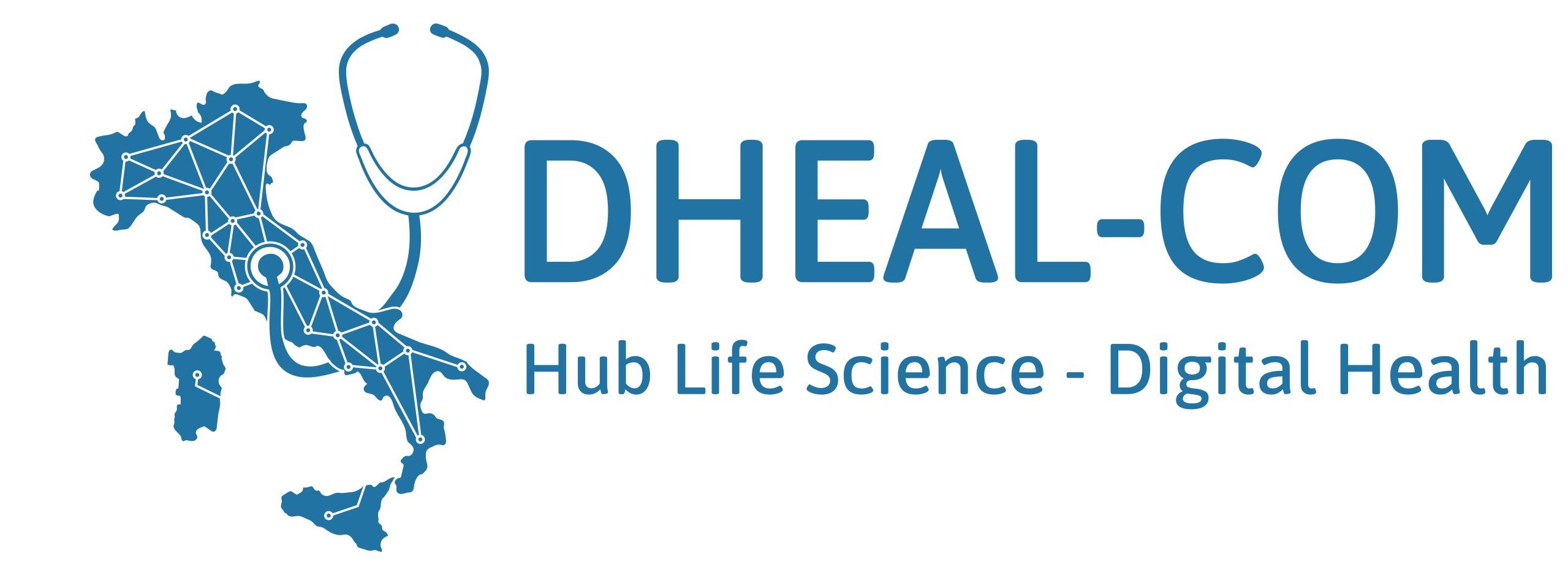Area tematica 2: contrastare il cognitivo funzionale degli anziani
Le funzioni cognitive, come memoria e attenzione, tendono a diminuire con l’età, e possono essere influenzate negativamente da stress, depressione o farmaci.
Le funzioni cognitive, come memoria e attenzione, tendono a diminuire con l’età, e possono essere influenzate negativamente da stress, depressione o farmaci.
Le funzioni cognitive, come memoria e attenzione, tendono a diminuire con l’età, e possono essere influenzate negativamente da stress, depressione o farmaci. Le malattie neurodegenerative, come l’Alzheimer, causano perdita di autonomia e richiedono cure complesse. La riserva cognitiva, che varia tra le persone, può essere migliorata con stili di vita sani, attività fisica, stimolazione intellettuale e legami sociali. Prevenire il declino cognitivo è fondamentale, soprattutto con l’aumento della popolazione anziana. Attività piacevoli e diversificate aiutano a mantenere le abilità cognitive, così come strategie per la memoria e il monitoraggio di vista e udito.
In Italia, ci sono circa 900 mila persone con una condizione definita come Deterioramento Cognitivo Lieve (DCL) (Vanacore, 2019). Il DCL è una condizione caratterizzata da un deficit di memoria, attenzione e funzione cognitiva oltre a quanto ci si aspetterebbe in base all’età e al livello di istruzione, che non interferisce significativamente con le attività quotidiane degli individui (Eshkoor et al., 2015) e ha un elevato rischio di progressione verso la demenza (De Carli, 2003). Attualmente, mancano terapie efficaci per il trattamento effettivo del DCL, quindi è cruciale agire innanzitutto con una prospettiva preventiva. In questo contesto, un ruolo chiave spetta al medico di base, che conosce il paziente e la sua famiglia e ha quindi la maggior possibilità di cogliere i segnali di avvertimento del disturbo, sia mnemonici che comportamentali, identificandolo attraverso strumenti appropriati e organizzando indagini diagnostiche approfondite e interventi terapeutici (Bianchetti et al., 2016). Inoltre, tra le strategie più appropriate per affrontare e prevenire il progressivo declino cognitivo dato dal DCL c’è il supporto delle funzioni cognitive (Odawara, 2012) attraverso attività di potenziamento o stimolazione cognitiva, che sono alleate utili nel trattamento di questa condizione poiché ne rallentano il progresso e la possibile trasformazione in malattia, aumentando le risorse cognitive (WAR, 2011). È quindi necessario attivare su larga scala un’efficace integrazione dei servizi sanitari e socio-assistenziali per i disturbi cognitivi, attraverso servizi che coinvolgano la medicina generale, che dovrà essere il punto di accesso dei pazienti e dei familiari alla rete di servizi socio-assistenziali e specialistici del Servizio Sanitario Nazionale (Bellomo et al., 2022), inoltre, sarà necessario sviluppare soluzioni che facilitino il supporto agli anziani, consentano la disponibilità di manodopera e rendano più conveniente l’assistenza geriatrica per il finanziamento dei sistemi sanitari (Siegel et al., 2014). In Italia sono disponibili diversi tipi di servizi sanitari e socio-assistenziali per le persone con fragilità cognitiva, tra cui Centri Diurni, strutture residenziali e Centri per i Disturbi Cognitivi e la Demenza (CDCD): spesso queste strutture sono carenti di personale sanitario adeguatamente formato per prendersi cura di questi pazienti al punto che avranno sempre più difficoltà a rispondere a tutte le richieste (Agenas, 2023). Inoltre, è stato osservato che la maggioranza degli over 65 preferisce invecchiare a casa piuttosto che in strutture residenziali (Meyer et al., 2010). In questo contesto, diventa centrale la figura del caregiver informale. Numerose ricerche notano che i caregiver familiari vivono un notevole carico nel fornire assistenza a pazienti
24
con segni precoci di demenza (Pinquart et al., 2003). Infatti, prendersi cura di una persona anziana che manifesta segni precoci di compromissione cognitiva ha effetti negativi sullo stato di salute del caregiver, sia fisicamente che psicologicamente Brodaty et al., 2009), conseguenze che prendono il nome di burden del caregiver (Liuet al., 2020), una sindrome che rappresenta il grado in cui il caregiver percepisce il proprio stress legato all’assistenza al familiare malato in modo negativo (Zarit et al., 1986).

Infografiche tabella caso 5
We firmly believe that the internet should be available and accessible to anyone, and are committed to providing a website that is accessible to the widest possible audience, regardless of circumstance and ability.
To fulfill this, we aim to adhere as strictly as possible to the World Wide Web Consortium’s (W3C) Web Content Accessibility Guidelines 2.1 (WCAG 2.1) at the AA level. These guidelines explain how to make web content accessible to people with a wide array of disabilities. Complying with those guidelines helps us ensure that the website is accessible to all people: blind people, people with motor impairments, visual impairment, cognitive disabilities, and more.
This website utilizes various technologies that are meant to make it as accessible as possible at all times. We utilize an accessibility interface that allows persons with specific disabilities to adjust the website’s UI (user interface) and design it to their personal needs.
Additionally, the website utilizes an AI-based application that runs in the background and optimizes its accessibility level constantly. This application remediates the website’s HTML, adapts Its functionality and behavior for screen-readers used by the blind users, and for keyboard functions used by individuals with motor impairments.
If you’ve found a malfunction or have ideas for improvement, we’ll be happy to hear from you. You can reach out to the website’s operators by using the following email info@dheal-com.it
Our website implements the ARIA attributes (Accessible Rich Internet Applications) technique, alongside various different behavioral changes, to ensure blind users visiting with screen-readers are able to read, comprehend, and enjoy the website’s functions. As soon as a user with a screen-reader enters your site, they immediately receive a prompt to enter the Screen-Reader Profile so they can browse and operate your site effectively. Here’s how our website covers some of the most important screen-reader requirements, alongside console screenshots of code examples:
Screen-reader optimization: we run a background process that learns the website’s components from top to bottom, to ensure ongoing compliance even when updating the website. In this process, we provide screen-readers with meaningful data using the ARIA set of attributes. For example, we provide accurate form labels; descriptions for actionable icons (social media icons, search icons, cart icons, etc.); validation guidance for form inputs; element roles such as buttons, menus, modal dialogues (popups), and others. Additionally, the background process scans all the website’s images and provides an accurate and meaningful image-object-recognition-based description as an ALT (alternate text) tag for images that are not described. It will also extract texts that are embedded within the image, using an OCR (optical character recognition) technology. To turn on screen-reader adjustments at any time, users need only to press the Alt+1 keyboard combination. Screen-reader users also get automatic announcements to turn the Screen-reader mode on as soon as they enter the website.
These adjustments are compatible with all popular screen readers, including JAWS and NVDA.
Keyboard navigation optimization: The background process also adjusts the website’s HTML, and adds various behaviors using JavaScript code to make the website operable by the keyboard. This includes the ability to navigate the website using the Tab and Shift+Tab keys, operate dropdowns with the arrow keys, close them with Esc, trigger buttons and links using the Enter key, navigate between radio and checkbox elements using the arrow keys, and fill them in with the Spacebar or Enter key.Additionally, keyboard users will find quick-navigation and content-skip menus, available at any time by clicking Alt+1, or as the first elements of the site while navigating with the keyboard. The background process also handles triggered popups by moving the keyboard focus towards them as soon as they appear, and not allow the focus drift outside it.
Users can also use shortcuts such as “M” (menus), “H” (headings), “F” (forms), “B” (buttons), and “G” (graphics) to jump to specific elements.
We aim to support the widest array of browsers and assistive technologies as possible, so our users can choose the best fitting tools for them, with as few limitations as possible. Therefore, we have worked very hard to be able to support all major systems that comprise over 95% of the user market share including Google Chrome, Mozilla Firefox, Apple Safari, Opera and Microsoft Edge, JAWS and NVDA (screen readers).
Despite our very best efforts to allow anybody to adjust the website to their needs. There may still be pages or sections that are not fully accessible, are in the process of becoming accessible, or are lacking an adequate technological solution to make them accessible. Still, we are continually improving our accessibility, adding, updating and improving its options and features, and developing and adopting new technologies. All this is meant to reach the optimal level of accessibility, following technological advancements. For any assistance, please reach out to info@dheal-com.it
